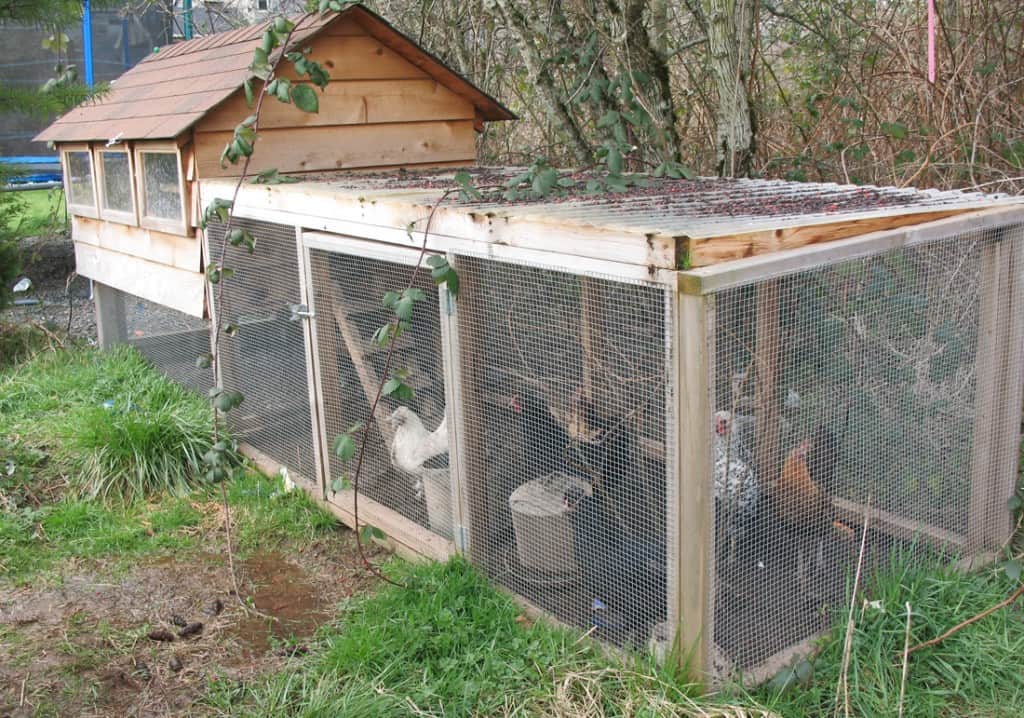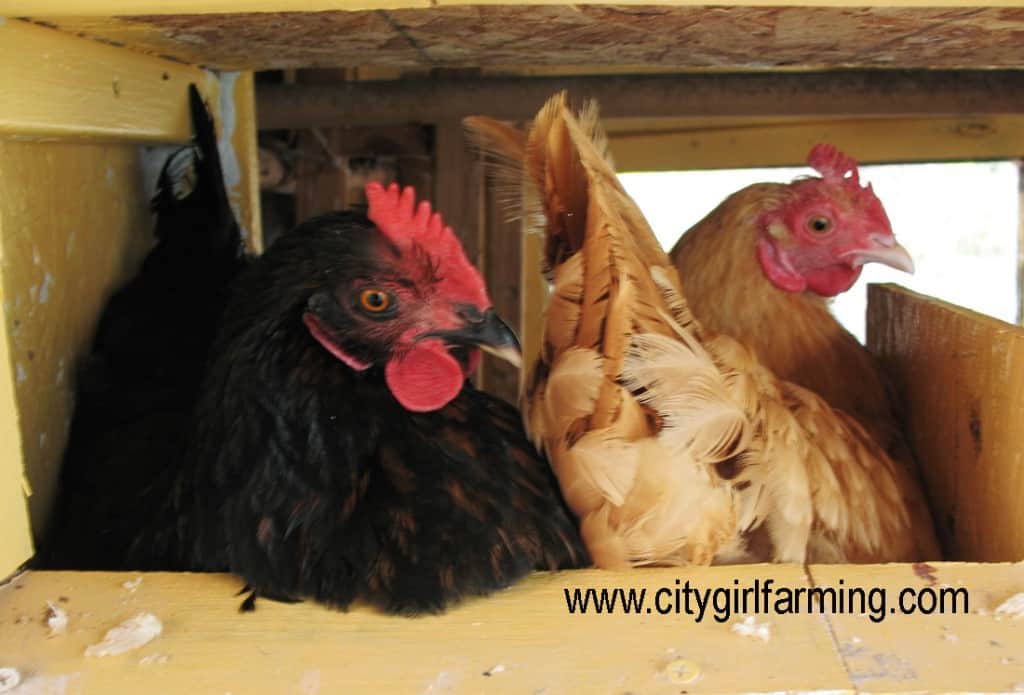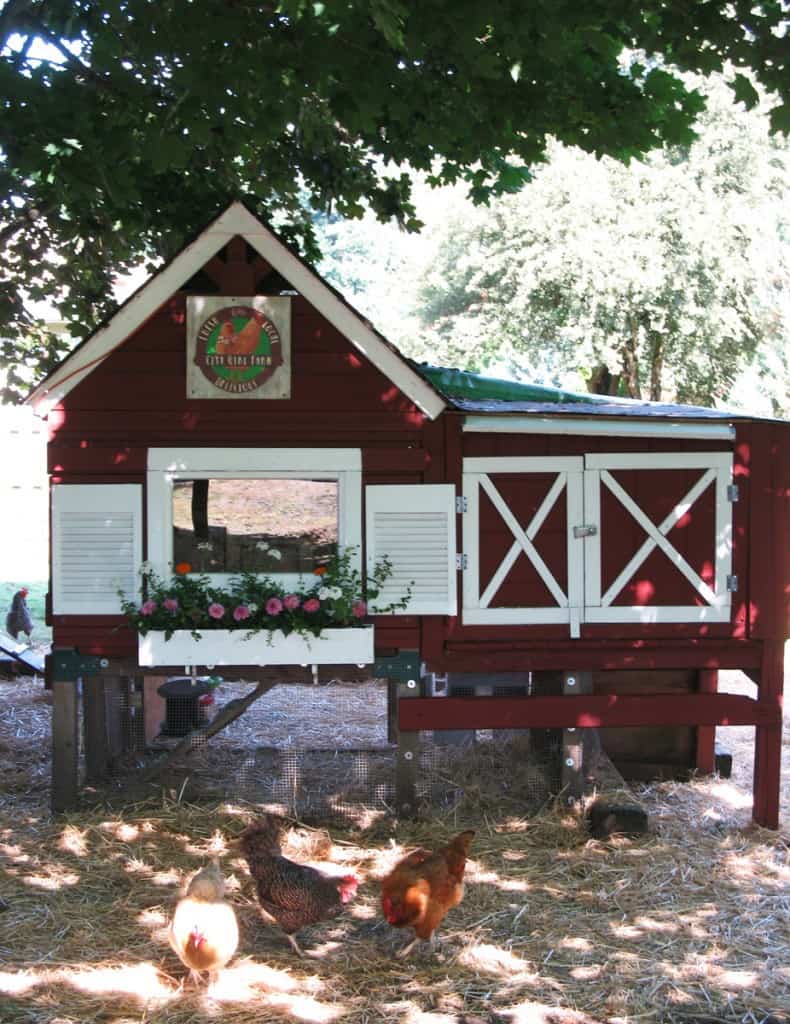While there are some basic chicken coop basics you need to include in your coop…those coops can come in all sizes, shapes and colors. Some are structural works of art with windows and flower boxes and fancy or homey or funny touches added to personalize them. They can be purchased pre-built, as kits, or made from scratch. Chicken coops can be re-claimed or recycled dog houses, kids playhouses, sheds, or any other suitable box like structure that will keep your chickens secure (safe from predators) and protected from the weather.
Whether you plan on a fancy coop, an out of ordinary coop, or just a basic chicken coop, there are several key features each coop must include. Here’s the list:
The Hen House:
Chickens need a covered and enclosed area to call their home with a roof and walls.

The Chicken Run:
This is a secure place for chickens to be when not in the chicken coop and it usually ‘fenced’ with chicken wire.
The Perch or Roost:
This is a bar or piece of plywood that is installed 2 feet or so off the ground where chickens like to hang out and sit (roost). Being off the ground helps them feel safer and keeps them dry. This roosting pole is generally where the flock will sleep at night.
The Nest Box:
This space is where the chickens will lay their eggs. A chicken coop will often have several nest box spaces tucked away for privacy in laying. The boxes themselves are generally about the size of a shoebox or a bit bigger. Large enough for the chicken to be inside and not feel crowded.

The Chicken Feeder:
A container that holds food for the chickens. This can be free-standing or hanging in the hen-house or in a covered area of the chicken run. It’s a good idea to elevate the feeder to about shoulder height of the chickens. If it’s free-standing, you can set it on top of bricks, wood or other structures. It will keep the food cleaner and waste down.

The Chicken Waterer:
A container that holds water for the chickens. This can also be free-standing or hanging in the hen-house or out in the chicken run.
Additional things to consider before you build, buy or convert something into a chicken coop include:
Location (according to the local city/county regulations):
If you live in a city or HMO, make sure to check on the regulations. Most cities should have their rules about keeping chickens posted on their website. Look there first. Written in ordinances and codes of the city will most often be regulations about how far away (from human housing) your chicken coop must be placed. for example, when I lived in the city, my coop had to be at least 70 feet from the front property line and 100 feet away from neighbor’s houses.
Location (what’s best for the chickens):
If you live in a place where it’s extremely hot in the summer, placing your coop where there’s at least partial shade (under a big tree for instance) will help protect them from overheating. If you live where there’s nasty winter wind, think about where/how you can build your coop that will provide protection from the wind, etc.

Elevation (of the chicken coop):
Some people swear by having their hen-house off the ground, others like it touching earth. There are potential benefits and drawbacks to each method. Think about them before you build your coop.
Manure Cleanup:
Easy coop clean up is essential for the health of your birds. It’s also essential for a positive chicken experience for you. Unclean coops breed disease and attract flies and other bugs. Think about ease of manure removal and cleanliness as you design and build your coop.
Once you’ve given thought to all of these issues, you’re ready to dive in. There are many companies that offer chicken coop kits and pre-built coops. I built my first coop (in photo above) from a used play structure and a bunch of recycled wood. There are thousands of ways to build a coop. The sky, your imagination, your space and your pocket book are the limitations. Just keep in mind the basic needs of your chickens and have fun. If you want to build your own coop and follow some detailed instructions (including a materials list), here’s a helpful ebook from The Chicken Coop Guides with five different coop plans included.
